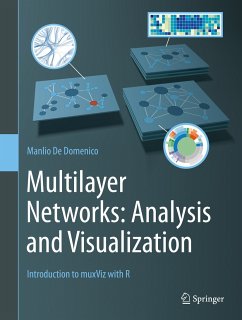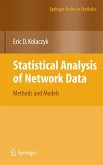The adoption of multilayer analysis techniques is rapidly expanding across all areas of knowledge, from social sciences (the first facing the complexity of such structures, decades ago) to computer science, from biology to engineering. However, until now, no book has dealt exclusively with the analysis and visualization of multilayer networks. Multilayer Networks: Analysis and Visualization provides a guided introduction to one of the most complete computational frameworks, named muxViz, with introductory information about the underlying theoretical aspects and a focus on the analytical side. Dozens of analytical scripts and examples to use the muxViz library in practice, by means of the Graphical User Interface or by means of the R scripting language, are provided.
In addition to researchers in the field of network science, as well as practitioners interested in network visualization and analysis, this book will appeal to researchers without strong technical or computer science background who want to learn how to use muxViz software, such as researchers from humanities, social science and biology: audiences which are targeted by case studies included in the book. Other interdisciplinary audiences include computer science, physics, neuroscience, genetics, urban transport and engineering, digital humanities, social and computational social science.
Readers will learn how to use, in a very practical way (i.e., without focusing on theoretical aspects), the algorithms developed by the community and implemented in the free and open-source software muxViz. The data used in the book is available on a dedicated (open and free) site.
Dieser Download kann aus rechtlichen Gründen nur mit Rechnungsadresse in A, B, BG, CY, CZ, D, DK, EW, E, FIN, F, GR, HR, H, IRL, I, LT, L, LR, M, NL, PL, P, R, S, SLO, SK ausgeliefert werden.









